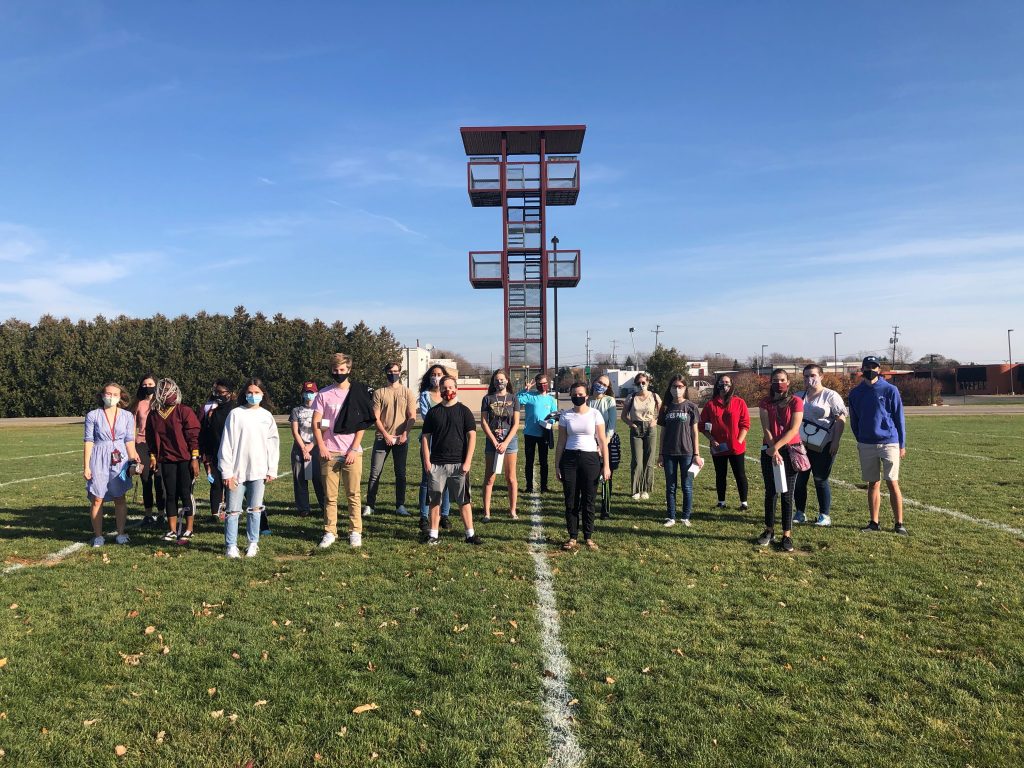We are not lacking in words to describe 2020 as a year. It’s been complicated, unprecedented, disappointing, frustrating, heartbreaking and at times, inspiring.
Our individual experiences have varied, but we all share a universal truth: there’s a lot of work to be done. No one wants 2021 to be a repeat of 2020, but we can all agree that we need to make changes to ensure the years to come represent the reality we want.
Despite this tumultuous year, 2020 also happens to be Central Sustainability’s first year. Our website officially launched in August, but the groundwork began a lot earlier.
Eric and I were hired by former Chief Diversity Officer A.T. Miller to work on AASHE’s Sustainability Tracking Assessment Reporting System. STARS is a self-reporting framework that allows higher education institutions to measure their sustainability performance.
Participating in STARS was an opportunity for CMU to continue and potentially expand its commitment to sustainability, so A.T. extended his space to allow us to work on STARS.
Although Eric and I were hired separately and worked during different semesters, we managed to reach the same conclusion while working on STARS: CMU has a huge gap in centralized sustainability.
Despite the student-driven endeavors, we were lacking organized sustainability efforts at the institutional level. Facilities Management – which oversees the recycling and composting programs – was the closest thing to a formal sustainability department, with a focus on the technical and more operational aspects of sustainable development.
Besides initiatives led by student groups, sustainability at CMU was previously spearheaded by faculty member Tom Rohrer. His work had a lasting impact and contributed to the existing culture of sustainability, but after he retired, the Great Lakes Institute for Sustainable Systems, which he had developed, became stagnant.
We realized that our work wasn’t going to be over after STARS, and that it was, in fact, just beginning.
With the support of A.T. and the Office for Institutional Diversity, Equity and Inclusion, Eric and I were allowed to continue the work of countless students and staff before us.
This began with Eric drafting a sustainable purchasing policy for the university, which was passed five months later in October. With the help of diversity communications specialist Mimi Gonzales Barillas, we establish a cmich webpage that could host the information and projects we would begin.
During the summer, Eric and I focused on creating resources such as the Sustainability Living Guide and the walking tours. It was also during this time that we dedicated ourselves to embracing sustainability in all of its forms to emphasize social, cultural, and human sustainability alongside environmental sustainability.
Once the semester began and we could connect with more people, we were soon presenting our resources, leading walking tours, beginning new collaborations, and creating new projects. We had entered the forest and realized the endless possibilities.
In October, we assisted Marie Koper of the Mount Pleasant Citizens’ Climate Lobby and sociology faculty Elizabeth Bradshaw in transitioning the Climate Solutions Summit to a virtual format. Our website and YouTube housed all information relating to the summit, and our office sponsored Andrew Hoffman as the guest speaker. This event was our first opportunity to present ourselves in the public limelight.
Later that month, we were invited to join the Michigan Campus Sustainability Collective to represent CMU as the sustainability department. Through that connection, Eric and I were given the honor to moderate a panel on environmental justice as part of the Michigan Campus Earth Day 50.5, hosted by MICSC and Michigan State University.
This semester we’re looking forward to beginning work on the Ethnobotanical Garden, increasing our outreach and engagement, starting new projects, and expanding on our partnerships and collaborations. We’re excited for our role in leading Campus Race to Zero Waste this year, and seeing what innovative changes we can make standard at CMU.
As we reflect, we’ve seen our fair share of challenges and shortcomings, but we are grateful for the support and resources we’ve received in our meek beginnings.
It’s worth noting that Eric and I are only students – though passionate, we are not experts and are limited by our lack of experience, but perhaps that naiveté has paid off. We are not held back by what is presumed to be feasible and attainable but rather by what we believe is necessary and important.
We’ve said before that we truly believe in sustainability, and we believe that in order for it to be “sustainable,” it must be institutionalized. Looking forward, we hope that our work can be picked up by a supporting community and university, and subsequently continued in order to ensure sustainability initiatives remain a priority at CMU.
***
We’d like to thank A.T. Miller for his far-sighted understanding and faith, Stan Shingles for his unwavering encouragement and dedication, Mimi Gonzales Barillas for her reliable enthusiasm, and the rest of the Diversity staff at CMU for their welcoming support of sustainability efforts.
We would also like to extend our gratitude to: Jay Kahn, Don Long and Jonathan Webb from Facilities Management; Sally Kniffen and all of our supporters from the Saginaw Chippewa Indian Tribe; Abby Sheppard of TBTT, CHP Director Pat Cwiek, Kim Voisin of Residence Life, Marie Koper of the Mount Pleasant Citizens’ Climate Lobby, faculty member Elizabeth Bradshaw, Matthew Liesch from the Geography and Environmental Studies Department; Rose Spickler, Laura Young, and the rest of the Michigan Campus Sustainability Collective.
Lastly, we would like to thank everyone we could not: the people who have read our posts, attended our tours, responded to our emails, participated in our survey – people who have expressed support and excitement for our work. We would like to thank countless student leaders and all of our collaborators. This could not be done without the people who believe sustainability is a goal worth pursuing.

